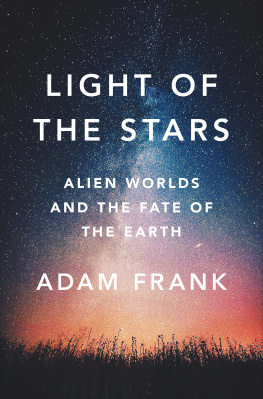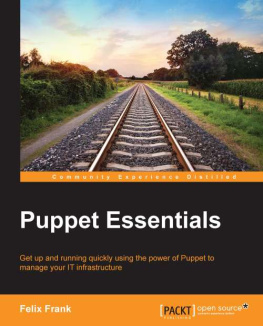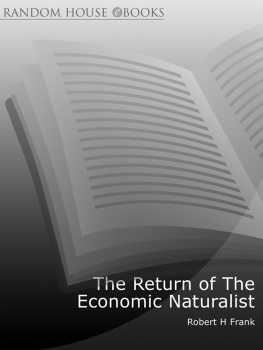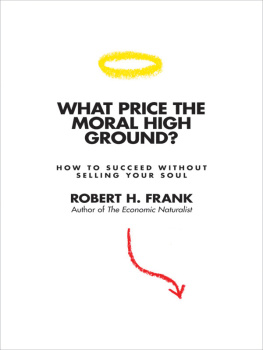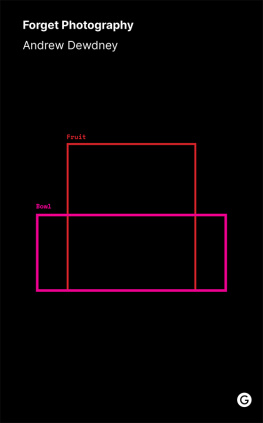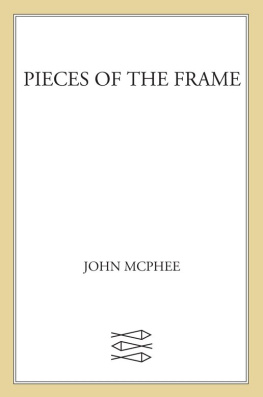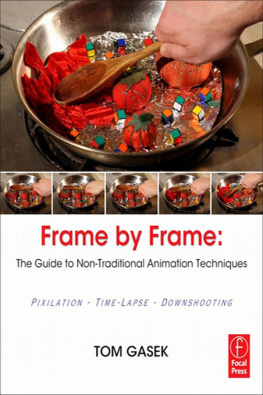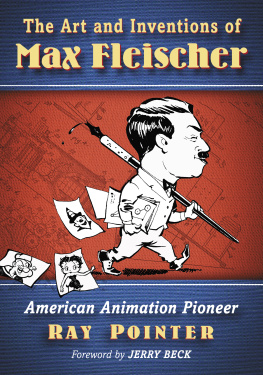Contents
Luminos is the Open Access monograph publishing program from UC Press. Luminos provides a framework for preserving and reinvigorating monograph publishing for the future and increases the reach and visibility of important scholarly work. Titles published in the UC Press Luminos model are published with the same high standards for selection, peer review, production, and marketing as those in our traditional program. www.luminosoa.org

Frame by Frame
The publisher and the University of California Press Foundation gratefully acknowledge the generous support of the Ahmanson Murphy Imprint in Fine Arts.
The publisher also gratefully acknowledges the generous support of the Department of Film Studies at the University of North Carolina Wilmington and, at the University of Chicago, the Department of Cinema and Media Studies, the Division of the Humanities, and Yuri Tsivian.
Frame by Frame
A Materialist Aesthetics of Animated Cartoons

Hannah Frank
Edited and with an introduction by Daniel Morgan
Foreword by Tom Gunning

UNIVERSITY OF CALIFORNIA PRESS
University of California Press, one of the most distinguished university presses in the United States, enriches lives around the world by advancing scholarship in the humanities, social sciences, and natural sciences. Its activities are supported by the UC Press Foundation and by philanthropic contributions from individuals and institutions. For more information, visit www.ucpress.edu .
University of California Press
Oakland, California
2019 by Hannah Frank
Suggested citation: Frank, H. Frame by Frame: A Materialist Aesthetics of Animated Cartoons . Oakland: University of California Press, 2019. DOI: https://doi.org/10.1525/luminos.65
This work is licensed under a Creative Commons CC BY-NC-SA license. To view a copy of the license, visit http://creativecommons.org/licenses .
Library of Congress Cataloging-in-Publication Data
Names: Frank, Hannah, 1984 2017, author. | Morgan, Daniel, 1977- editor, writer of introduction. | Gunning, Tom, 1949- writer of foreword.
Title: Frame by frame : a materialist aesthetics of animated cartoons / Hannah Frank ; edited and with an introduction by Daniel Morgan; foreword by Tom Gunning.
Description: Oakland, California : University of California Press, [2019] | This work is licensed under a Creative Commons CC BY-NC-SA license. To view a copy of the license, visit http://creativecommons.org/licenses . | Includes bibliographical references and index. |
Identifiers: LCCN 2018044521 (print) | LCCN 2018048471 (ebook) | ISBN 9780520972773 (ebook) | ISBN 9780520303621 (pbk. : alk. Paper)
Subjects: LCSH: Animated films History and criticism. | Motion pictures Aesthetics.
Classification: LCC NC1765 (ebook) | LCC NC1765 .F65 2019 (print) | DDC 791.43/3409 dc23
LC record available at https://lccn.loc.gov/2018044521
FOR MY FAMILY
IN MEMORY OF MY FATHER
Apparently he had examined them patiently picture by picture and imagined that they would be screened in the same way, failing at that time to grasp the principle of the cinematograph.
F LANN OB RIEN
CONTENTS
LIST OF ILLUSTRATIONS
FIGURES
FOREWORD: HANNAH FRANKS PAUSE
Tom Gunning
Sometime in 2014, Hannah Frank sent me a draft of a chapter from her dissertation on Hollywood cartoons, which I read with curiosity and pleasure. In her analysis of the processes of cel animation, she discussed her own method of analysis and research. In this context she turned to the writings of Emily Dickinson, especially recent research on the poet that not only returns to the original manuscripts to restore Dickinsons eccentric punctuation and line spacing that early editors tended to tidy up, but investigates Dickinsons materials: the actual slips of paper she wrote on; their sources (wrappers, envelopes, flyleaves from books), shapes, and textures; as well as the various marks that appear on them. I read this with some fascination even as it went on for several pages. I could see the model that this new Dickinson research set for Franks own investigation of the material basis of Hollywood cartoons. Frank was examining the individual animation cels from which animated cartoons of the studio era were composed, as well as tracing technological shifts in animation processes and how these affected what we watch on the screen. But when I met with her to discuss the chapter, I wondered aloud whether such a digression into Dickinson might pose a problem for readers and publishers, even if she had convinced her dissertation committee of its relevance. Hannah gave me that quiet smile I had come to recognize as a sign of her combination of amusement and confidenceplus a dash of mischief. Demonstrating how all these things were relatedtechnology, history, materials, cinema, literaturewas precisely the point of her work. I am delighted that now a publisher and editor have agreed and are making this daringly original and constantly surprising work available to a wide group of readers. The only regret that accompanies this happy event is the fact that Hannah herself could not see it, due to her untimely death at age thirty-three.
Frame by Frame , the published version of Franks dissertation, then titled Looking at Cartoons, is one of the most thorough examinations yet written of the animated cartoons of the studio era. Frank undertook in-depth research, scrutinizing the films and the materials underlying them, studying animation technology and its changes. She profited from recent decades of serious research and analysis by historians of animation. But she deliberately went further. She not only practiced close analysis of the cartoons she discussed, but asked how far close such readings could go, and what exactly we should pay attention to. Like recent Dickinson scholars, Frank paid attention to things others might ignore or consider unimportant. She highlighted the mistakes, glitches, and peripheral details that were revealed when she examined cartoons frame by frame. In these pages Frank performs a dizzying tour-de-force, uncovering aspects of cartoons that slip beneath the thresholds of ordinary viewing.
But we might ask, why? Does such a winnowing end up grasping at straws rather than wheat? Does this sort of criticism amount to more than just a demonstration of academic clevernesslike recent critics uncovering of small errors in Alfred Hitchcocks films, or discovering props in them that seem to reveal possible in-jokesbut little else? No question, Frank is clever, but she is also serious. Her method of scrutiny offers more than a new edition of trivial pursuits. Her method and the discoveries it allows remain firmly grounded in the nature of her subject: the animated cartoon.
Like most brilliant doctoral students, Frank revised the topic of her dissertation a number of times over the years we worked together. At one point she wanted to focus on the actual labor involved in the studio system of animation. Recent research into studio animation has detailed the highly rationalized, industrialized, hierarchical work that lay behind the carnivalesque cavorting of Daffy Duck and Woody Woodpecker. Cartoons depended upon a sort of assembly-line process in which lower-paid workers such as inkers and in-betweeners, often women, completed the details of the images that would appear on the thousands of individual cels that made up a cartoon. Franks close examination of these cels, then, does not simply search out details invisible to the mass of spectators, but rather uncovers the traces of occluded labor. Rather than recherch cleverness, Franks task is redemptive, bringing to light the contributions these anonymous and invisible workers made. Her scrutiny, however, is not primarily prosecutorial, but rather empathetic, focused as much on the creativity of the workers as on their exploitation. Even at the level of repetitive work Frank uncovers moments of wit, jokes, and protests against an effaced individualityas well as signs of fatigue and inattention. At points Franks discoveries recall the marginal figures, jokes, flourishes of creativity, and even hints at blasphemy that the art historian Michael Camille found medieval scribes left on the edges of manuscripts they were copying.



